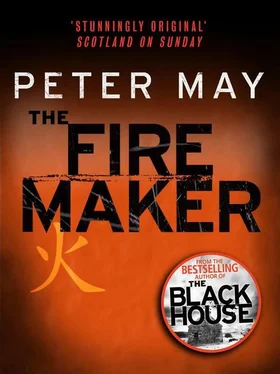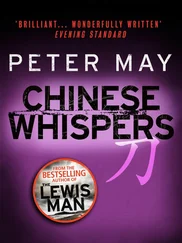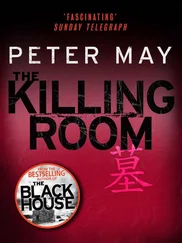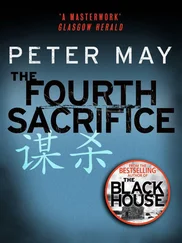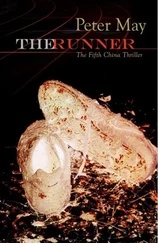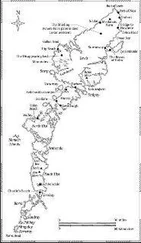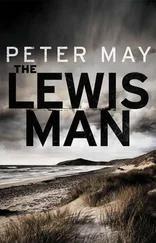‘Why would he talk to us off the record?’ Wu asked.
‘Because I ask him to,’ Li said evenly.
And there was a silence around the table as each of them considered what exactly that might mean. They all knew there was a history between Li and The Needle. Li had managed to obtain a warrant for his arrest three years ago. And then the only witness in the case had turned his bicycle under the wheels of a No. 4 trolley bus on Wangfujing Street. It had been impossible to prove it was anything other than an accident, and The Needle had walked.
There had been a time when men like The Needle would have been ‘persuaded’ to confess to their crimes, and punished accordingly. But times had changed. Police practice, and the whole justice system, was under close scrutiny. And conventional means of applying social pressures on an individual, through his work unit, did not apply to entrepreneurs like The Needle, who would claim that his income came from the covered market stalls he ran in Liulichangxi Street.
The meeting ended in the same gloomy mood in which it had begun. Beyond continuing the interviews and taking statements from potential witnesses, no one had any fresh ideas. But as they drifted out of the meeting room, there was a buzz among the detectives, a sense of anticipation about Li’s intention to beard The Needle in his own den.
Li parked at the door of the Centre of Material Evidence Determination and went inside. In Professor Xie’s outer office he found Lily Peng sitting with a face like sour cream, flipping agitatedly through a science magazine. ‘Is Dr Campbell here?’ he asked.
She flicked a thumb towards the autopsy suite. ‘In there. For hours .’
‘Not watching today?’ he asked, with a flicker of a smile.
She glared at him. ‘No room,’ she said.
He frowned, puzzled. ‘What do you mean?’
‘See for yourself.’ And she turned back to her magazine.
Li pushed through two sets of swing-doors into the autopsy suite, and found it crowded with fifteen students in green coats and face masks gathered round the gaping body of the itinerant worker from Shanghai. The chest cavity was still exposed, the scalp peeled down over the face, and the brain had been removed from the skull. Some of the faces of the students were the same colour as their coats. Two autopsy assistants were in the process of tidying up the corpse. Margaret was giving a running commentary.
‘The organs from the bucket get put back into the chest cavity… as you see. The breastplate is then reapproximated, and the assistants will sew up my incision with some coarse waxed twine. The skullcap gets replaced, the scalp pulled back into place and sewn closed as well. Then the body will be scrubbed, hosed off, blotted dry and put in a body-bag for return to the refrigerator. I don’t know about here, but in the States a mortician would collect the body, pump it full of preservative, dress it up and apply facial make-up so that it can be displayed in the coffin for family and friends at the funeral.’
‘In this case,’ Professor Xie intervened, ‘the body will be returned to the family in Shanghai and there will be a straightforward cremation. Most people in China could not afford the services of a mortician.’
Margaret turned to the students. ‘It’s a great pity you weren’t here yesterday for the autopsy we carried out on a burn victim. It was an extremely interesting case. Professor Xie employed a useful piece of technology called a cryostat to enable us to speed up our findings. Anyone know what a cryostat is?’ No one did. ‘Basically it’s a refrigerator that allows us to freeze tissue samples for sectioning and microscopic examination almost immediately. It is more commonly used during surgical operations to allow surgeons to have on-the-spot diagnoses made before continuing with the operation.’ She turned and indicated the samples she had cut from various organs. ‘These samples will take six hours or more to prepare for microscopic examination, using the more traditional method of setting them in paraffin or wax. That allows them to be cut into ultra-thin, but permanent, sections. Using the cryostat the sections melt almost immediately and are corrupted by the process.’
She looked beyond the students and acknowledged Li for the first time. ‘Ah. I see we’ve been joined by Deputy Section Chief Li. Nicely timed, Detective Li.’ She turned to her students and told them, as if in confidence, ‘He’s a little squeamish about these things.’
There were a couple of giggles and a few smirks and Li, to his intense annoyance, felt his face reddening. She turned back to him. ‘I took the opportunity of asking the professor if he would mind my class sitting in on this morning’s second autopsy. Of course, he was entirely agreeable. I think it’s very important that they gain this kind of experience during training, don’t you?’
‘Of course,’ he said stiffly. ‘And while demonstrating your skills to your students, did you happen to notice what the victim died of?’
There were some more stifled laughs among the students, and a collective intake of breath. Despite the fact that English was their second language, they had been aware immediately of the atmosphere between the pathologist and the policeman.
Margaret was quite unruffled. ‘This victim died from a separation of the skull from the first vertebra of the neck. It’s known as an Alanto-occipital disarticulation. The first vertebra, the one on which the head rests, is called the atlas.’ She smiled sweetly. ‘Those anatomists were cute with names, don’t you think?’ This failed to raise a smile. She shrugged. ‘Anyway, it is jointed in two places to the occipital bone at the base of the skull. When the separation of one from the other occurs, probably with a double “pop”, much like the cracking of your knuckles, the spinal column is severed by the edge of the foramen magnum through which it passes into the skull. Death would have been instantaneous, a very rare thing. Most deaths — including our previous autopsy, the single knife strike to the heart — take a minute or two.’ She removed the goggles which she had pushed high up on her head and pulled and stretched the elastic as she spoke. ‘This particular injury is very common in automobile accidents, but a lack of any other major trauma in this case means he probably wasn’t in a car at the time.’
Again she smiled, and again found that no one else shared her sense of humour. She sighed. ‘From the absence of any finger bruising on the victim’s neck or face, I would suggest that his assailant grasped the victim with the arms, one around the forehead, the other at the base of the back of the head, twisting while forcing upwards and forwards, causing the foramen magnum to slide across the top of the spinal column and sever the spinal cord. Such a clean and fatal break, in the absence of other major trauma, suggests to me a substantial degree of expertise.’
The imagery conjured up by Margaret’s description left everyone in the room uneasy.
‘In our previous autopsy…’ She checked her watch. ‘Goodness, how time flies when you’re enjoying yourself.’ The faces around the room stared back at her with a serious intensity. Didn’t they realise, she wondered, that humour was the only thing that kept you sane in this job? ‘In our previous autopsy, the victim was killed by a single stab wound to the heart. My guess would be that he was approached from the rear, held around the neck by an arm, and the knife driven inwards and upwards by the assailant with his free hand. The blade was about nine inches long. It entered at the base of the breastbone, severing parts of both the left and right ventricles. The direction from which the stab came is unreliable. So I can’t tell you if the killer was left- or right-handed. That’s just for the movies. But I can tell you that the delivery of a single, fatal wound of this nature would require considerable skill.’
Читать дальше
